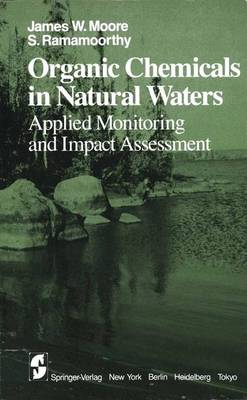Springer Series on Environmental Management
3 total works
This series is dedicated to serving the growing community of scholars and practitioners concerned with the principles and applications of environ mental management. Each volume is a thorough treatment of a specific topic of importance for proper management practices. A fundamental objective of these books is to help the reader discern and implement man's stewardship of our environment and the world's renewable re sources. For we must strive to understand the relationship between man and nature, act to bring harmony to it, and nurture an environment that is both stable and productive. These objectives have often eluded us because the pursuit of other individual and societal goals has diverted us from a course of living in balance with the environment. At times, therefore, the environmental manager may have to exert restrictive control, which is usually best applied to man, not nature. Attempts to alter or harness nature have often failed or backfired, as exemplified by the results of imprudent use of herbicides, fertilizers, water, and other agents. Each book in this series will shed light on the fundamental and applied aspects of environmental management. It is hoped that each will help solve a practical and serious environmental problem.
This series is dedicated to serving the growing community of scholars and practitioners concerned with the principles and applications of environ mental management. Each volume is a thorough treatment of a specific topic of importance for proper management practices. A fundamental objective of these books is to help the reader discern and implement man's stewardship of our environment and the world's renewable re sources. For we must strive to understand the relationship between man and nature, act to bring harmony to it, and nurture an environment that is both stable and productive. These objectives have often eluded us because the pursuit of other individual and societal goals has diverted us from a course of living in balance with the environment. At times, therefore, the environmental manager may have to exert restrictive control, which is usually best applied to man, not nature. Attempts to alter or harness nature have often failed or backfired, as exemplified by the results of imprudent use of herbicides, fertilizers, water, and other agents. Each book in this series will shed light on the fundamental and applied aspects of environmental management. It is hoped that each will help solve a practical and serious environmental problem.
The purpose of environmental protection must be designed to meet the demands of an environment under progressively greater strain. In an effort to address future environmental challenges, one important goal must be the effective management of inorganic contaminants of surface water, this book provides an information base for the control of inorganic contaminants in an era of reduced environmental commitment. Considered are 24 of the most important inorganic contaminants of surface water, each systematically characterized under seven categories - production, sources and residues, chemistry, bioacumulation, toxic effects to aquatic organisms, health effects, drinking water and recommendations. This volume presents the most comprehensive and up-to-date survey of all major inorganic contaminants of surface water. Its systematic approach permits easy reference and exceptional facility with the text; its detailed emphasis on research and monitoring priorities offers an invaluable treatment for researchers and policy makers both.
This book will have broad interest for environmental scientists, engineers, and managers concerned with environmental protection chemistry, and toxicology, municipal engineering, and public health.
This book will have broad interest for environmental scientists, engineers, and managers concerned with environmental protection chemistry, and toxicology, municipal engineering, and public health.


